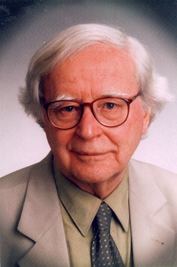Nationality Sweden Role Mathematician | Name Germund Dahlquist | |
 | ||
Born 16 January 1925Uppsala ( 1925-01-16 ) Institutions Royal Institute of Technology Doctoral students Ake BjorckGunilla BorgeforsLothar ReichelGustaf Soderlind Books Numerical Methods in Scientific Computing, Numerical methods Doctoral advisor Fritz Carlson, Lars Hormander | ||
Germund Dahlquist (16 January 1925 – 8 February 2005) was a Swedish mathematician known primarily for his early contributions to the theory of numerical analysis as applied to differential equations.
Dahlquist began to study mathematics at Stockholm University in 1942 at the age of 17, where he cites the Danish mathematician Harald Bohr (who was living in exile after the occupation of Denmark during World War II) as a profound influence.
He received the degree of licentiat from Stockholm University in 1949, before taking a break from his studies to work at the Swedish Board of Computer Machinery (Matematikmaskinnämnden), working on (among other things) the early computer BESK, Sweden's first. During this time, he also worked with Carl-Gustaf Rossby on early numerical weather forecasts.
Dahlquist returned to Stockholm University to complete his Ph.D., Stability and Error Bounds in the Numerical Solution of Ordinary Differential Equations, which he defended in 1958, with Fritz Carlson and Lars Hörmander as his advisors. As part of this work he introduced the logarithmic norm (also introduced by Russian mathematician Sergei Lozinskii the same year).
In 1959 he moved to the Royal Institute of Technology (KTH), where he would later establish what became the Department of Numerical Analysis and Computer Science (NADA) in 1962 (now part of the School of Computer Science and Communication), and become Sweden's first Professor of Numerical Analysis in 1963. He helped establish the Nordic journal of numerical analysis, BIT, in 1961. In 1965 he was elected into the Royal Swedish Academy of Engineering Sciences (IVA).
The software package COMSOL Multiphysics, for finite element analysis of partial differential equations, was started by a couple of Dahlquist's graduate students based upon codes developed for a graduate course at KTH.
